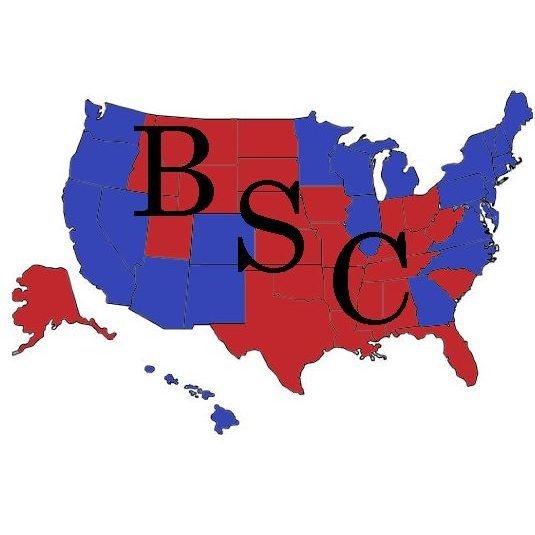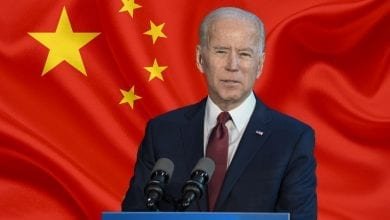Critical Race Theory: From Whence Did It Come?
We’ve all heard the term “Critical Race Theory,” or “CRT,” being thrown about of late. One can hardly not hear about it if one follows the news at all.
According to many, the recent election of Glenn Youngkin as the new Governor of Virginia is, in part, because of CRT becoming a dominant issue, particularly its presence in Virginia public schools.
Youngkin’s opponent, however, former Governor Terry McAuliffe, keeps insisting that CRT is not taught in Virginia schools, and that to say it is amounted to a “dog whistle” to white supremacists and their basest instincts.
Quick aside: if a “dog whistle” appeals only to white supremacists, why are the only ones who seem to hear it and talk about it are mainstream media types on CNN and MSNBC? Just wonderin’.
To hear mainstream media journalists and talking heads, McAuliffe is right and it is not taught in Virginia schools. Parents in Virginia demur, believing they are being asked by the mainstream media to deny their lying eyes. They see CRT in the schools and its effect on their kids every day, so how can McAuliffe, the media, et al. say otherwise?
It is time for a calm, rational inquiry into just what Critical Race Theory is and what all the current fuss is about. It is hoped that this will enlighten those with an open mind.
To begin with basics, Critical Race Theory is a tool, a form of analysis applied to Law which renders a deeper understanding of the development of Law, its application, and its consequences. That is what it purports to do.
As such, technically speaking, CRT is NOT taught in Virginia or in any other state’s public schools. But those who say it isn’t being taught in schools are playing fast and loose with language here.
The problem comes when some – some – who use CRT as a tool in analyzing the history and structure of Law reach conclusions based on their interpretations of that analysis that include notions like “America is structurally racist,” or that “whites are inherently racist.”
The problem is public schools, not to mention the consultants who are pushing these ideas and making a boatload of money doing so, have accepted the conclusions of SOME practitioners of CRT and then run with it. They do so by an uncritical acceptance of some ideas that may coincide with CRT without understanding or practicing the discipline itself.
Critical Race Theory has its uses. When laws were passed that punished criminally the users of crack cocaine far more harshly than those using powder cocaine, it was certainly the case that the law punished minority communities more brutally than wealthier white communities. To point out such racial imbalances in the Law is a good thing. And these laws have since been updated.
One point needs to be made clear: There is a huge difference between saying there are, historically speaking, racist structures within American Law and culture on one hand, and saying America is structurally racist in its entirety on the other.
Because one can point to a law which clearly has racist intent – think segregation laws in the Jim Crow south – it does not necessarily follow that all laws therefore have racist intent. Responsible users of CRT know that. The CRT hucksters pandering to school administrators and publishing books like White Fragility and How to be an Anti-Racist either know that and hide it, or are so ideologically-driven that they simply cannot see it. More on that momentarily.
And, the cynical might say, as long as the money’s good why question it.
What is really going on, and is often mentioned but rarely explained, is that those who conclude America is an essentially and ineluctably racist country are working within a Marxist frame of reference.
Basic Karl Marx teaches that the social history of man is a history of class conflict. Marx visualizes the social hierarchy that is society along the lines of a pyramid.
Interpretations of Marx and his notion of classes can vary wildly, but for simplicity’s sake allow the bottom rung of the pyramid to be filled with the proletariat, workers who own nothing but their own labor, along with the natural resources available.
Workers, after all, are a kind of natural resource available to those who hire.
The next rung up the pyramid includes tradesmen and factory owners – capitalists, or the bourgeoisie – who hire workers for a wage and then profit from the “surplus value of labor” provided by the workers. Thus, the relationship between the proletariat and the capitalists is one of exploitation.
Included in this capitalist rung are bankers, the professional class and those who own the inert natural resources and the modes of transportation of these natural resources, e.g., the railroad barons, shipping and trucking magnates.
Above the capitalists is the rung represented by the truly rich and powerful, an elite who ultimately set the limits and standards to be followed by the other classes.
These would include those with the financial and governmental clout to influence the passing of laws for society as a whole.
And what is the purpose of these laws, according to Marx: it is to protect and expand the interests of the rich and powerful elite. And because of their money and power they control the police powers that enforce these laws that benefit them and extend their control of society.
So, for Marx, the agrarian laborers of the land, farm workers, as well as factory workers and other laborers are exploited by profit-seeking landowner farmers as well as factory and store owners generating profits for themselves, all while also supporting the elite class who, through its police power, control the entire system and maintain its stability so as to keep generating profits.
Where is the church in all this? According to Marx, who famously describes religion as “the opiate of the masses,” the church plays an important role in the exploitation of the people.
When the church teaches about heaven and hell, and how one’s behavior on earth determines whether one is to be rewarded in heaven or punished in hell, it all turns on “being good.” What is good? According to Marx, in a capitalist system to be good is to obey
Marx’s idea of the church was put to song by the radical labor unionist Joe Hill, who was part of a labor group known as the Wobblies. He mocked Salvation Army teaching when he parodied a Salvation Army song the downtrodden would sing amidst their suffering: “there’ll be pie in the sky by and by when I die, and it’ll be alright, it’ll be alright.”
Thus, the church, too, is a tool of the rich and powerful, along with the Law, to assure that everyone knows their place and doesn’t try to change things.
Through the efforts of the church and other social institutions a “false consciousness” is created throughout society such that to be a worker for a wage is
“good,” to be a capitalist exploiting workers for their labor is also “good,” and to use coercion and police powers to stabilize and keep the whole system running is “good” as well.
And all of it constitutes an unconscious classism. People actually believe this is how the world is and ought to be.
So how does Marxist teaching on class conflict come to be Critical Race Theory? A simple magic trick. Instead of “class,” substitute “race.”
Derrick Bell, a former Harvard Law professor who died in 2011, is generally thought of as the father of CRT. His book, Race, Racism and American Law, a textbook of case law on legal issues surrounding race contains many of the basic ideas that culminated in Critical Race Theory taught in American law schools.
The lowest rung of the racial pyramid, of course, is made up of oppressed and impoverished blacks and other powerless minorities who own nothing but their labor and their sense of injustice.
The next rung up would include those who profit from the oppressing of blacks, including businesses, schools, sports teams, and even civil rights agitators like Al Sharpton and Jesse Jackson, who make quite a good living advocating for the oppressed. The last thing they want is for “racism” and “oppression” to go away.
And, of course, the highest rung is made up of the rich and the powerful who control the judiciary and the legislatures that pass and adjudicate laws to keep blacks and other minorities in their place, with severe punishment for any who would resist and or revolt. Think the Supreme Court’s Dred Scott Decision here.
For advocates of the extreme form of CRT, the Dred Scott Decision is the epitome of structural racism and an expression of white supremacy. What they don’t talk about is that the decision, usually thought of today as infamous and absurd, was later reversed and tossed on the dust heap of history.
The basic belief of CRT, which should be argued rather than assumed, is that the controlling power of the elites is white, more specifically white supremacist, and thus the laws represent what is in the interests of whites at the expense of other races.
Over time, these white supremacist ideas come to permeate all of society.
Hence the notion that American society is “systemically racist” and that a white person cannot not be a racist. It’s just Marx’s class warfare in a new dress.
Part of the problem is that the theory has a “rubber sheet” feel to it. Language gets stretched in all sorts of ways that confound normal discourse.
In the world of Ibrahim Kendi and Robin D’Angelo, writers of How to be an Anti-Racist and White Fragility, respectively, to say of oneself “I am not a racist” is, in Kendi’s and D’Angelo’s understanding, evidence that you are racist.
“No, I believe in equal rights for all,” you insist.
“Ah,” they respond, “even more evidence of just how racist you are.”
“Wait a minute,” you try to explain. “I am all in on Martin Luther King’s saying we should each be judged by the content of our character, and not by the color of our skin.”
“Oh my,” they respond. “You really need to be woke to the extraordinary extent of your racism.”
It’s all about that “false consciousness” Marx speaks of. Kind of like “dog whistles,” they can see the racism in your very bones while you cannot. But how can one have an intelligent discussion with such people, and by “such people” that would include leaders of the various “workshops” on racism going on in workplaces across the land these days?
Answer: You cannot. Their ideology trumps all criticism. Thinking of CRT advocates, I am reminded of Paul de Man’s book Blindness and Insight. Yes, critical theory can give one a sense of insight, deep insight, but it simultaneously blinds one from what else is really there. And that’s the problem with Kendi’s and D’Angelo’s approach.
Ultimately, CRT will fall of its own accord because of discordant facts and because of its internal incoherence, as has already happened to Marxism. In the meantime, though, it is used as an ideological hammer to re-shape people’s – and school kids’ – idea of society and of what constitutes justice.
I suppose it’s comforting for certain kinds of minds to have a very complex world reduced to such asinine simplicity, but that’s precisely the attraction of the ideologue.
Subsume yourself into the ideology and you’ll never have to think again.
Featured image is a screengrab from CNN.
Content syndicated from TheBlueStateConservative.com with permission.




